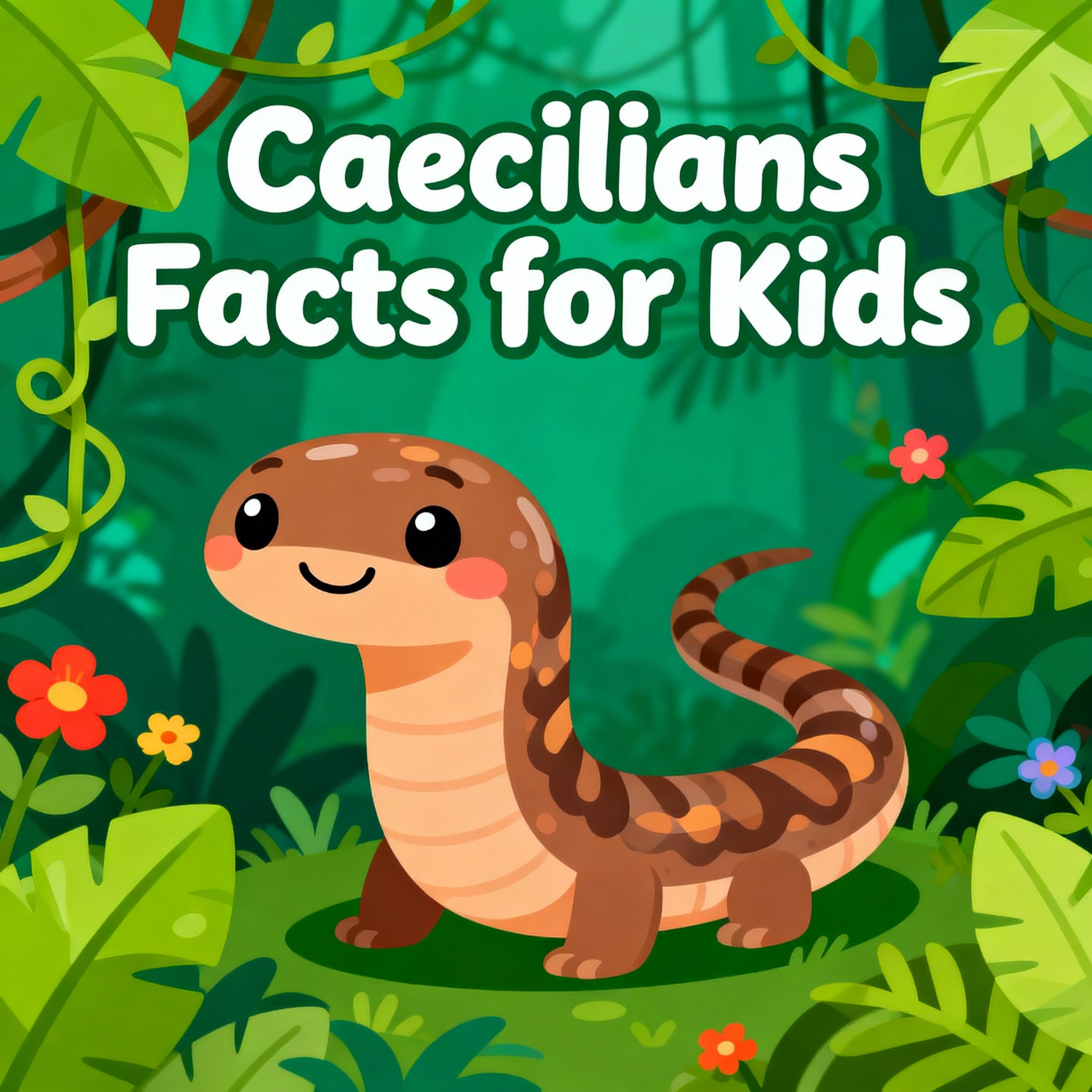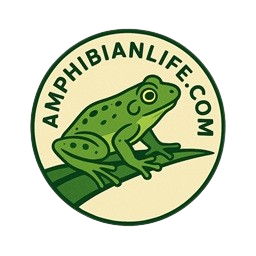
Discover the secret underground world of the legless amphibians known as caecilians!Amazing Caecilian Facts for Kids” — a fun, kid-friendly, and science-based deep dive into the mysterious world of caecilians, the least-known amphibians on Earth!
🌍 Introduction to Caecilians
- Caecilians are amphibians, like frogs and salamanders — but without legs!
- They look like worms or snakes, but they’re neither.
- Their name “caecilian” comes from the Latin word caecus, meaning “blind.”
- Caecilians are the least known group of amphibians.
- They live mainly underground or underwater, so they’re rarely seen.
- Scientists believe there are over 200 species of caecilians.
- They belong to the scientific order Gymnophiona (or Apoda, meaning “without legs”).
- Caecilians are found mostly in tropical regions around the world.
- You can find them in South America, Africa, India, and Southeast Asia.
- Some species live entirely in water, while others burrow in moist soil.
🧬 Body and Anatomy Facts
- Caecilians have long, cylindrical bodies that can stretch from a few inches to over 5 feet!
- The largest caecilian is the Thomson’s caecilian, which can reach 5 feet (1.5 meters).
- The smallest caecilians are just a few inches long.
- They have smooth, slimy skin like other amphibians.
- Their bodies are covered with ring-like folds called annuli, which look like earthworm segments.
- Some caecilians have tiny scales under their skin, like reptiles!
- They have strong, pointed heads for digging through soil.
- Their eyes are tiny and often covered by skin or bone, so they can barely see.
- Instead of vision, they rely on smell and touch to explore their world.
- Caecilians have two small tentacles on their head that sense chemicals — like a snake’s tongue!
🧫 Senses and Adaptations
- Caecilians use their tentacles to find food and navigate in darkness.
- Their sense of smell is much stronger than their eyesight.
- Some caecilians can detect vibrations through the ground.
- They use special muscles and ribs to move like an accordion underground.
- Their slimy mucus helps them slide through soil and water easily.
- Caecilians’ skin can also absorb oxygen when it’s moist.
- Some aquatic caecilians have gills when young but lose them as they grow.
- A few species keep their gills for life, especially those living in water.
- Their bones are dense and strong, helping them push through tough soil.
- They have two sets of jaw muscles, making their bite surprisingly powerful!
🐣 Reproduction and Life Cycle
- Caecilians have some of the strangest reproductive habits in the animal kingdom!
- Most caecilians reproduce internally, unlike frogs and toads.
- Males have a special organ called a phallodeum to transfer sperm.
- Females may lay eggs or give live birth, depending on the species.
- About 25% of species lay eggs, while the rest are live-bearers.
- Some caecilian mothers stay with their eggs until they hatch.
- A few even guard and clean the eggs with their body mucus.
- Baby caecilians born from eggs are called larvae.
- Larvae live in water and have external gills.
- They later metamorphose into adults, losing their gills and growing lungs.
👶 Parental Care — The Weird and Wonderful
- Caecilian mothers are super caring parents!
- In some species, mothers feed their babies by letting them eat her skin — safely!
- This process is called dermatophagy, meaning “skin eating.”
- The mother grows a special fatty skin layer just for her babies.
- Babies use tiny teeth to gently scrape the nutritious skin off.
- She regrows this layer every few days until they grow strong.
- In some species, babies even wrap around their mother for protection.
- Some caecilians give birth to fully developed young, skipping the larval stage.
- In these species, babies feed on uterine milk before birth.
- Caecilian parental care is among the most unique in all amphibians!
🍽️ Diet and Feeding
- Caecilians are carnivorous.
- They eat worms, termites, ants, snails, and insects.
- Some larger species also eat small frogs, lizards, and snakes.
- They catch prey using their strong jaws and sharp teeth.
- Caecilians swallow food whole, just like snakes do.
- Their tentacles help them detect prey underground.
- Some aquatic caecilians feed on small fish or tadpoles.
- They hunt mostly at night or in dark burrows.
- Their mucus helps trap small insects while feeding.
- Caecilians help keep soil ecosystems balanced by controlling insect populations.
🧠 Behavior and Lifestyle
- Caecilians are shy and secretive creatures.
- They spend most of their time hidden underground or under leaves.
- Many people never see them, even if they live nearby!
- They come out mainly after rain, when the ground is soft and wet.
- Most species are solitary, living alone in tunnels.
- They can dig through soil quickly using their head and strong muscles.
- Some caecilians are completely aquatic, living in rivers and streams.
- Others are semi-aquatic, living both on land and in water.
- They move in a wave-like motion, similar to snakes.
- They are silent animals — they don’t croak or make sounds like frogs.
🌧️ Habitat and Distribution
- Caecilians live in tropical rainforests where the soil is soft and damp.
- They prefer areas with plenty of rain and humidity.
- You can find them under logs, leaf litter, and riverbanks.
- Some species make deep burrows, while others stay near the surface.
- Aquatic caecilians live in slow-moving rivers and muddy ponds.
- They are most common in South America, Central Africa, and Southeast Asia.
- The Indian caecilian (Ichthyophis glutinosus) is found in Sri Lanka and southern India.
- The African caecilian (Herpele squalostoma) lives in Central Africa.
- South American species are the most diverse of all.
- Because they’re so secretive, many species are still undiscovered!
💛 Conservation and Threats
- Caecilians are threatened by habitat destruction from farming and logging.
- Polluted water and pesticides can harm their skin and eggs.
- Climate change affects the rainfall and humidity they depend on.
- Some species are endangered because their forest homes are disappearing.
- Scientists know very little about their numbers because they’re so hard to find.
- Protecting rainforests and wetlands helps caecilians survive.
- Caecilians play an important role in keeping ecosystems healthy.
- They help aerate the soil as they burrow through it.
- By eating insects, they keep pest populations under control.
- Every caecilian species is an important part of the planet’s biodiversity.
🧪 Scientific and Historical Facts
- The first caecilian was scientifically described in the 18th century.
- Many people once thought they were worms or snakes!
- It wasn’t until much later that scientists learned they were amphibians.
- Caecilians share ancestors with frogs and salamanders.
- Fossils show they’ve been around for over 250 million years!
- Some extinct species had tiny legs, showing their evolutionary transition.
- Scientists use DNA studies to classify modern caecilians.
- Caecilians are often studied for their reproductive biology and skin toxins.
- Their regeneration abilities are not as strong as salamanders’, but still impressive.
- Caecilians remind us that some of nature’s most amazing creatures live out of sight, beneath our feet!
🌱 Conclusion
Caecilians may not be as famous as frogs or as colorful as salamanders, but they are one of nature’s most mysterious and fascinating creatures. These legless amphibians show how life adapts to every environment — even underground!
With powerful digging heads, caring mothers, and secret lives beneath the soil, caecilians prove that even the smallest, slimiest animals have incredible stories to tell. By learning about and protecting them, we help keep the hidden heart of Earth’s rainforests alive.
